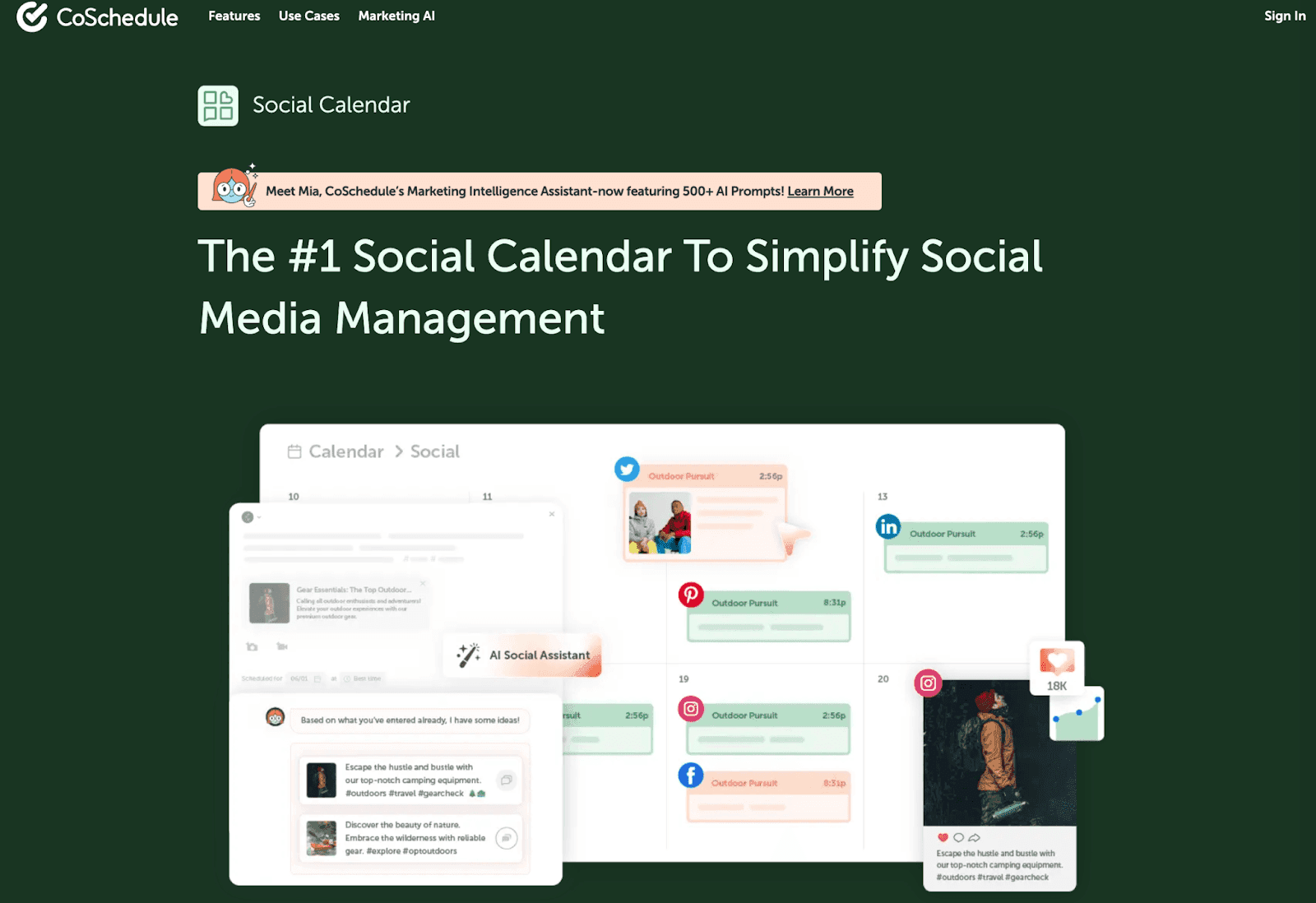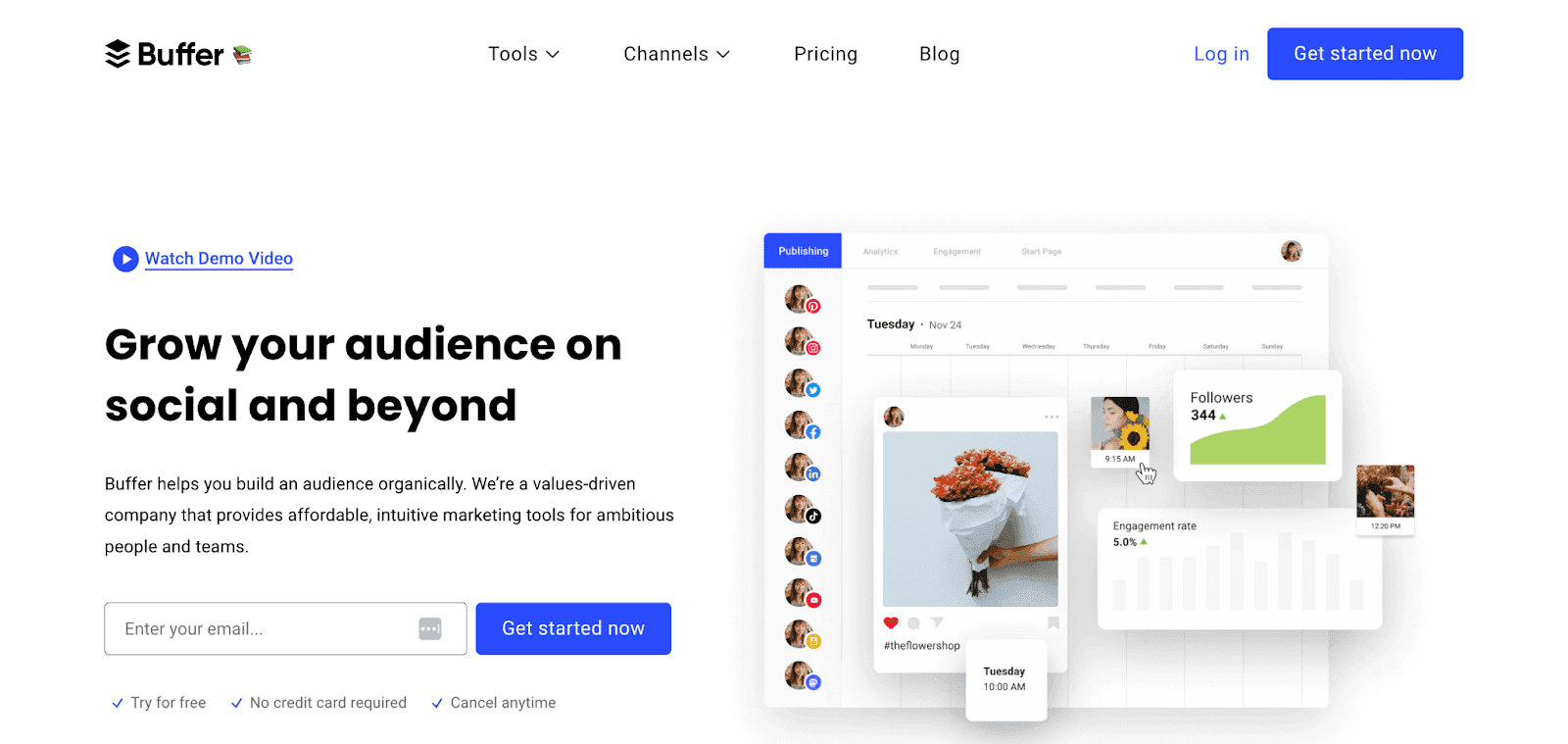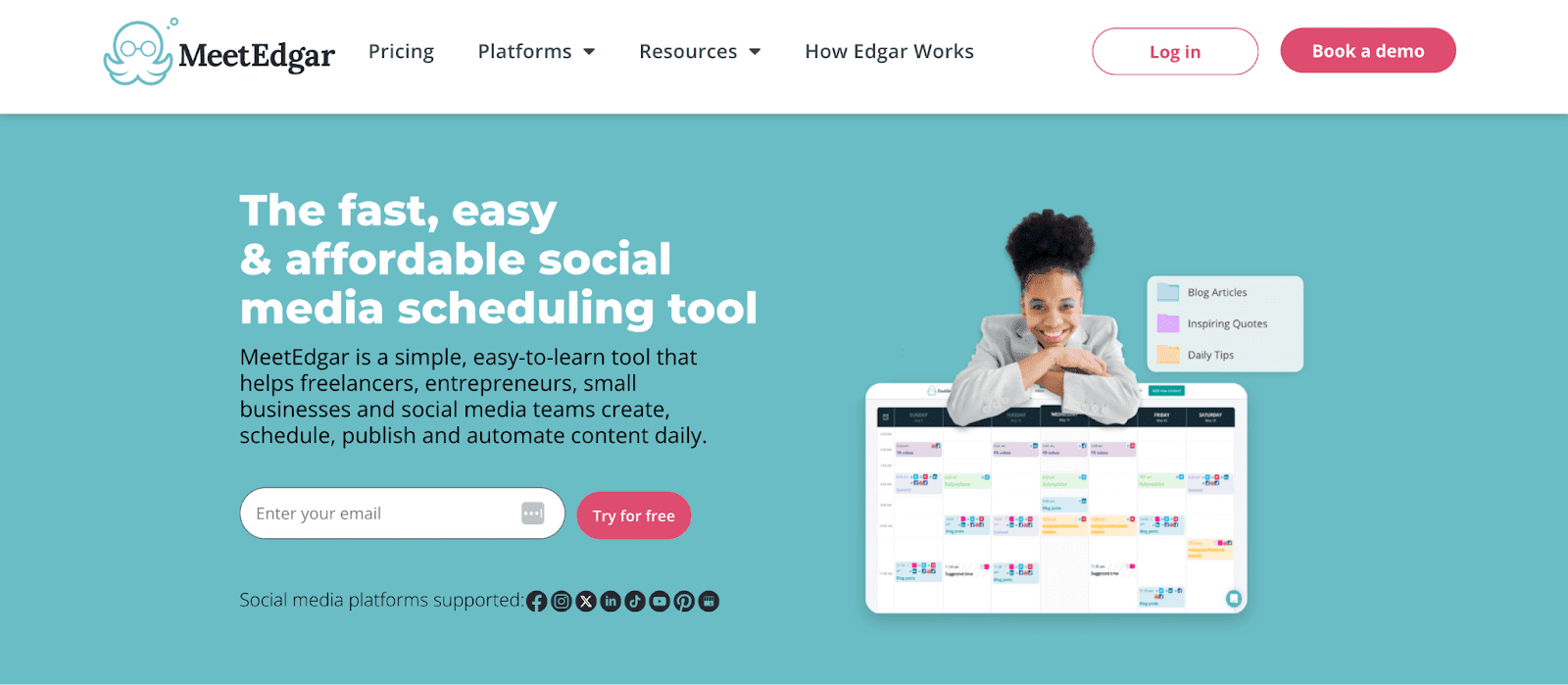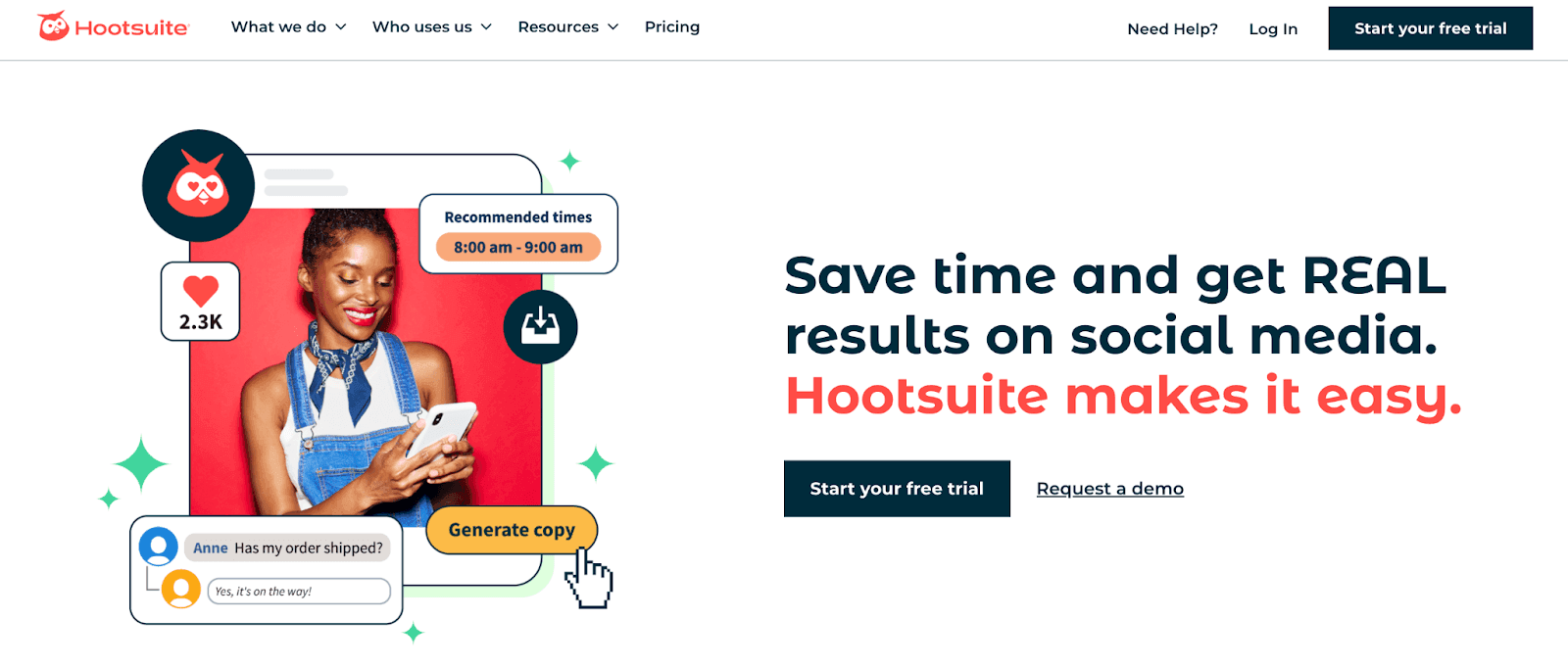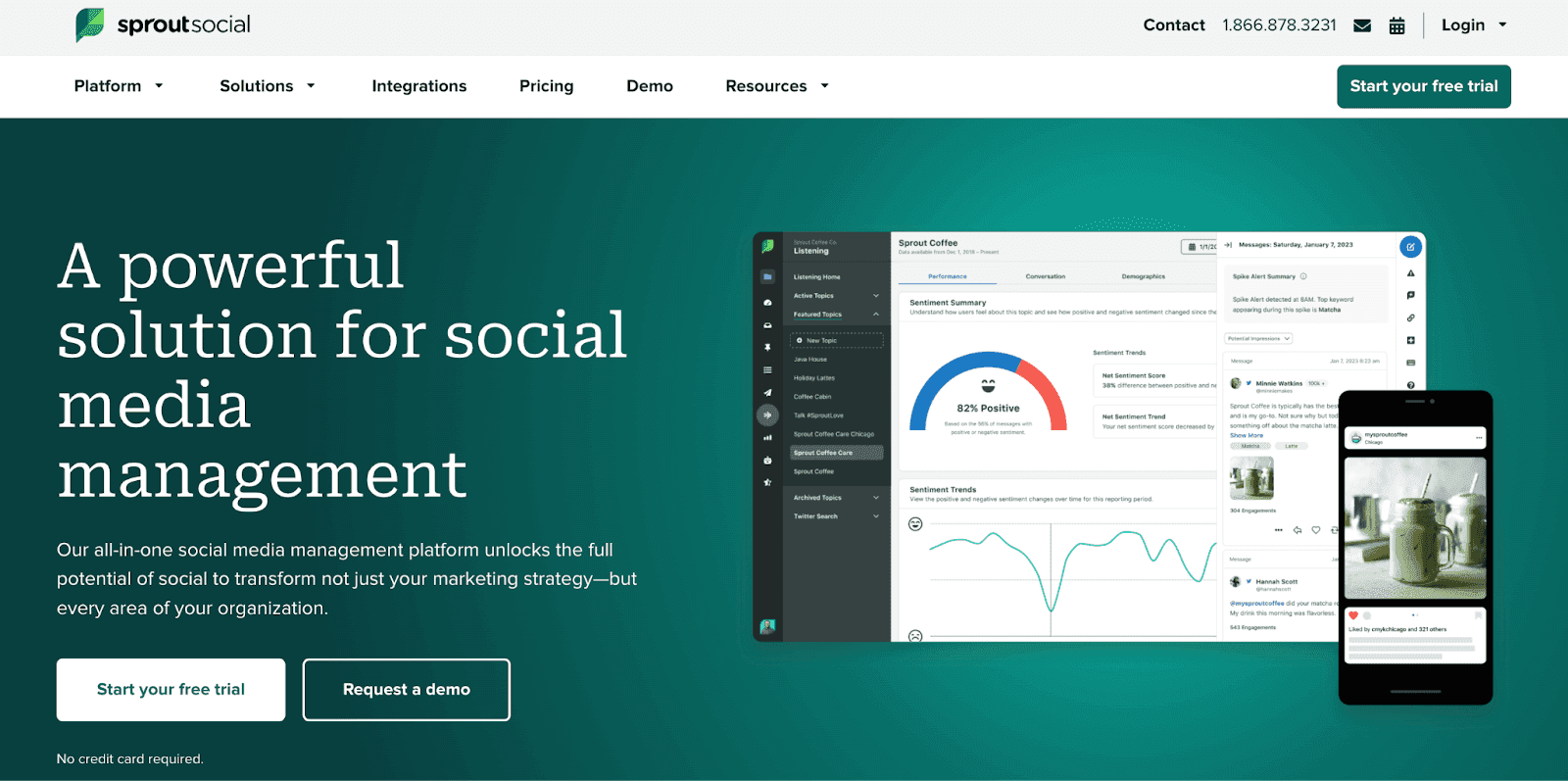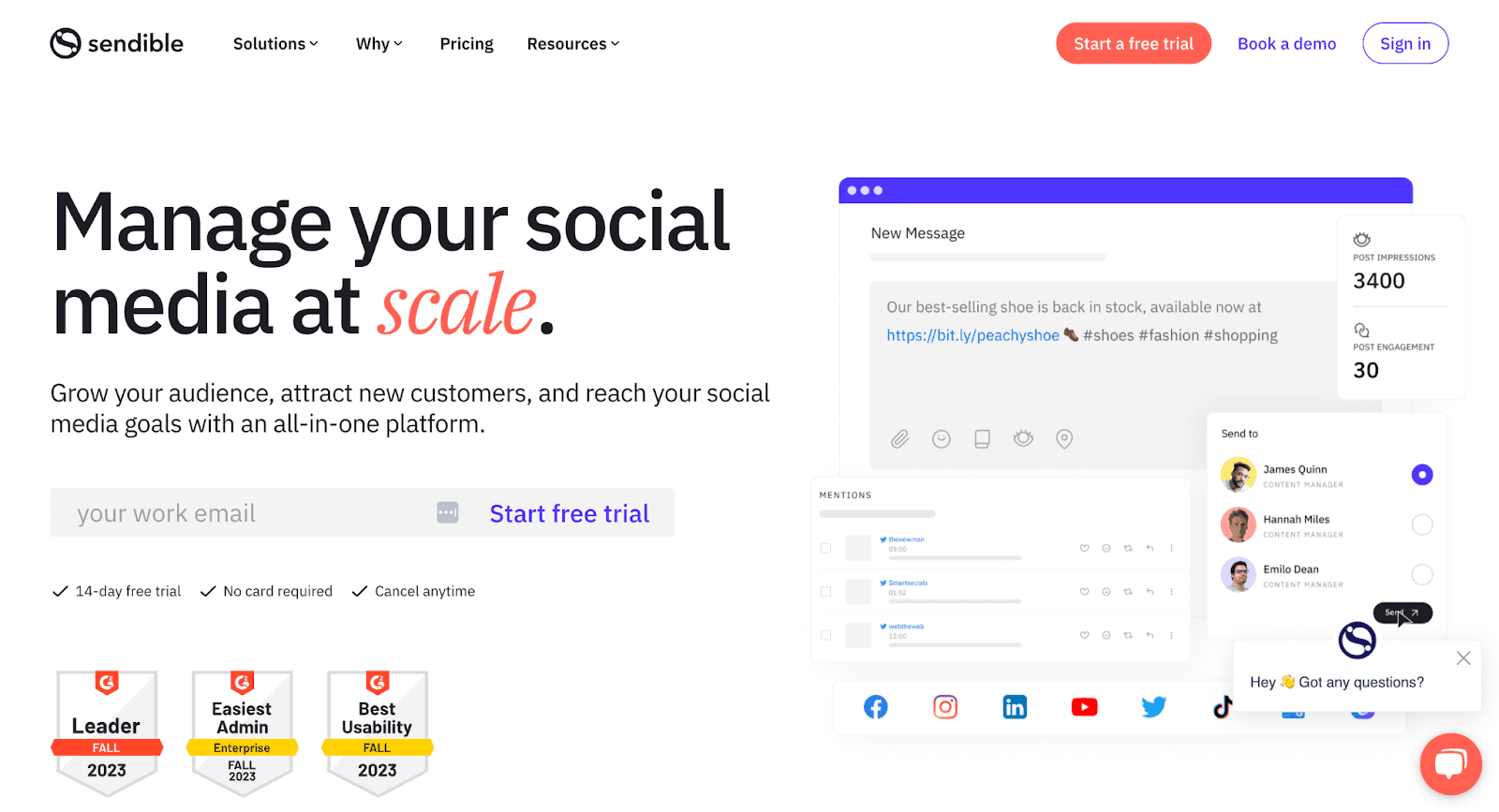You’re faced with a dilemma:
You know that reaching even a tiny fraction of the 4.89 billion social media users (projected to reach 5.85 billion by 2027) will do wonders for your revenue stream.
However, you just can’t seem to stay on top of things with your company’s social media accounts except for a few posts about your latest blog posts and some company news.
Given its potential to reach millions of people cost-effectively, you know you must do more. You need a plan.
This post shows how you can create a social media management plan that works, along with tips and the best tools to use so your social media efforts don’t seem like a fruitless endeavor.
Let’s dive in.
What Is Social Media Management?
Social media management is the process of managing your online presence through social media.
Though this definition might look simple, a lot goes into social media management. Things like:
- Managing different social media accounts,
- Planning, creating, and scheduling content,
- Monitoring and analyzing social media efforts,
- Engaging an audience and building a community,
- Optimizing social media advertisement campaigns,
And a lot more in between. It’s a full-time responsibility and not something to be left as an afterthought.
Social media management is vital for businesses to boost brand awareness, reach prospects at different stages of their customer journey, build customer trust and loyalty, and generate more revenue.
Recommended: Social Media Manager
How To Create A Social Media Management Strategy
It’s time to roll up your sleeves and dig into how to make social media work for you and your organization.
Here are the fundamental building blocks for creating a social media management strategy.
Define Your Audience & Goals
Before you start, it’s vital to define what you want to achieve with social media and thoroughly understand your audience.
Your goals should be SMART (Specific, Measurable, Achievable, Realistic, and Timely). For instance, you could aim to increase your post reach or audience growth rate.
As you set your goals, track the metrics that’ll help you know how close you are to hitting your goal. Say your goal is to increase post-reach. You should track metrics like follower count, likes, and comments.
Knowing your audience will help you choose the right social media platforms. For instance, B2B software buyers are more likely to be on LinkedIn than on TikTok.
In addition to knowing your audience’s platforms, you must be familiar with their demographic traits, pain points, motivations, and challenges. Such familiarity will help you create content that resonates with them.
Recommended:
Choose The Right Platform
You’d be wasting time, effort, and resources if you set up camp on a platform your audience doesn’t use.
So, use the findings about your audience to make an informed decision. For example, if you have a young audience, Instagram and TikTok might be the most valuable platforms to use.
You can also check for the platforms where your competitors have created accounts.
As you choose a platform, you should also learn how it works to determine the best content type. Some platforms work best with short-form videos, while others work best with text-based posts.
Build A Content Calendar
A content calendar helps you coordinate and plan your social media efforts. Marketers use it to handle the day-to-day management of social media content, like what to post and when.
Like a regular calendar, a content calendar gives you a general overview of what you’re working on and what else you need to do.
Using a content calendar helps you save time, improves your productivity, and keeps track of your goals.
Create Engaging Content
Your content is the core of your social media management plan. Without content, there simply isn’t anything to manage.
What you post depends on what you’ve learned about your customers or audience, your platform, and your goals.
For example, you could create a behind-the-scenes video to build trust with your audience and post it on Instagram.
If you’re using different platforms, you don’t always have to create new content whenever you want to post. You can repurpose existing content from other platforms or curate content from what your audience already posts.
Examples of different engaging content formats you can try include, but are not limited to, short-form videos, GIFs, live videos, user-generated content, images, carousels, and infographics.
Recommended Reading: Social Media Content
Measure Your Social Performance
Once you’ve started posting, measuring how well your social media campaign is working is vital.
It might take a couple of tries, posts, and tweaks to get it right, so don’t be alarmed if you don’t see the numbers you want at the start of the campaign.
Focus on the metrics that matter and use whatever data you have to improve your social performance.
Tips For Effective Social Media Management
Every social media management plan is unique. However, some general tips and best practices apply if you want to get the best out of your social media plan.
Recommended Reading: Social Media Marketing Tips
Here are some of those tips.
Create High-Quality, Engaging Content
With a ton of content already online, you must create high-quality and engaging content if you want to stand out. You should tailor your content to your audience’s needs and business goals.
Post Consistently & At The Best Times
You increase your chances of achieving your social media goals by posting consistently — and, more importantly, at a time when your audience has the best chance of seeing it.
Generally, the best times to post are 7:00 PM, 3:15 PM, and 8:41 AM in your target audience’s time zone. Use a content calendar to organize and schedule your posts to go out at the best time.
Engage With Your Audience
Social media isn’t an echo chamber. Even if you’re posting as a company, you’re still expected to engage with your audience.
Such engagement shows your brand’s personality and makes people trust you more.
Track & Analyze Performance
It’s vital to know whether your social media efforts are working. That way, you can make data-driven decisions to improve your campaign.
Work With Influencers & Brands To Reach A Wider Audience
If one of your goals is to reach a wider audience or gain more brand awareness, you should work with influencers or collaborate with other brands.
Such collaboration will help you leverage the influencer’s or brand’s authority and introduce you to a new audience.
Recommended Readings:
Encourage Followers To Create Content
Whether you like it or not, customers talk about and create content around your brand. You can use it to your advantage by encouraging followers to create such content.
This kind of content usually feels more authentic since it comes directly from customers. You can encourage your followers by offering an incentive or starting a social media challenge.
Optimize Social Profiles
Your social profiles are valuable online real estate you need to take full advantage of. You can optimize your social profiles by using a clear name, adding relevant information to your bio, and adding a link to your website. And do not forget to make your account business.
Boost Reach With Social Ads
Ever-changing algorithms can sometimes cause your organic reach to tank. You can boost your reach with social ads whenever that happens. Like with organic content, your social ads need to be engaging, in the correct format for the platform where you’re running the ad, and targeted at the segment of your audience most likely to be interested in your offer.
Social Media Management Tools
Managing social media accounts can get overwhelming sometimes. Fortunately, there are tools you can use to streamline different tasks and win back some of your time and energy.
Let’s examine six of these social media management tools.
1. CoSchedule’s Social Calendar
CoSchedule’s Social Calendar is an excellent tool for creating, scheduling, publishing, and measuring social media content.
This calendar helps you see the big picture of your social media strategy. That way, you can stay on top of things and create content that fills your calendar.
Main features: AI Social Assistant helps you generate ideas and write social messages. The ReQueue feature enables you to publish your best content to your social channels and automates your recurring social promotions.
Recommended Readings:
2. Buffer
Buffer provides tools to help marketers grow their audience organically.
It’s an excellent social media management tool for small business owners and content creators.
Main features: Social media analytics dashboard with daily updates and custom reports. It is a simple and intuitive platform that’s easy to use.
3. MeetEdgar
MeetEdgar allows you to schedule all your social media posts from one place. You can use MeetEdgar to track the real-time performance of your content and grow your audience.
Main features: A/B testing capabilities to improve your campaigns. Content repurposing or refresh to elevate your content’s value.
4. Hootsuite
Hootsuite has a suite of social media tools that help marketers see a return on their social media efforts, fill out their calendars, and reach their business goals.
Main features: Automation that helps save time and generate social media captions, hashtags, and content ideas. A universal platform to handle scheduling, engagement, and analytics.
5. Sprout Social
Sprout Social is an all-in-one social media management platform that handles social engagement, publishing, analytics, social listening, and advocacy for business owners.
Main features: Integrations with hundreds of social networks and other software tools. ViralPost Send Time Optimizer that publishes content at the best times.
6. Sendible
Sendible is designed to handle large-scale social media management. You can use this tool to schedule posts, source content ideas, and collaborate with clients or stakeholders.
Main features: Automated report dashboards to impress clients. A social listening feature that lets you track public sentiments and build stronger communities.
You’ve now covered the basics of creating a social media management plan. It’s time to put all you’ve learned into practice and enjoy social media’s rewards.
You can also check out CoSchedule’s Social Media Marketing Hub if you ever need a hand with anything relating to social media – it’s packed with helpful resources just for you.

